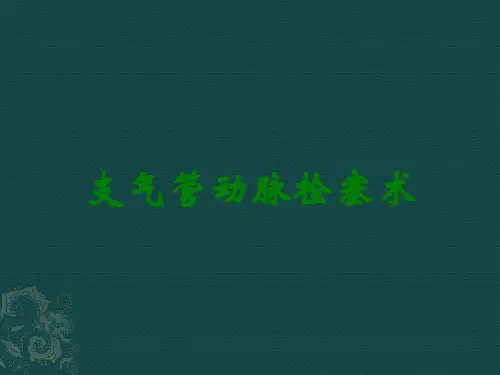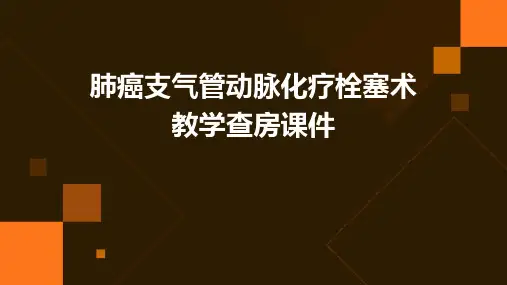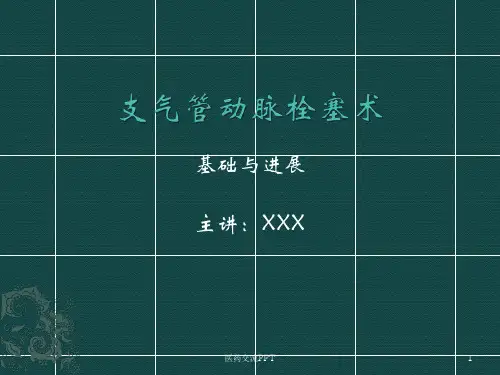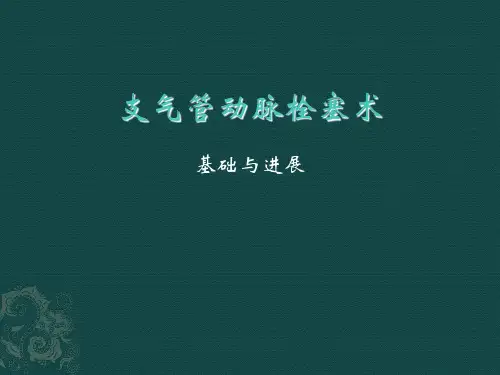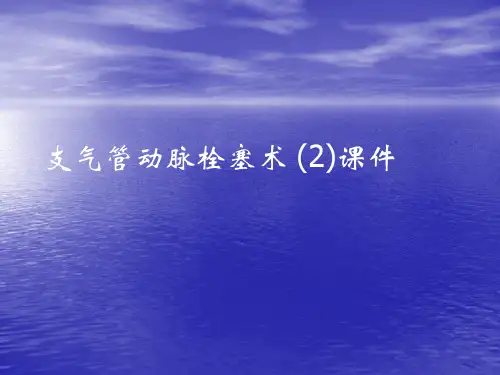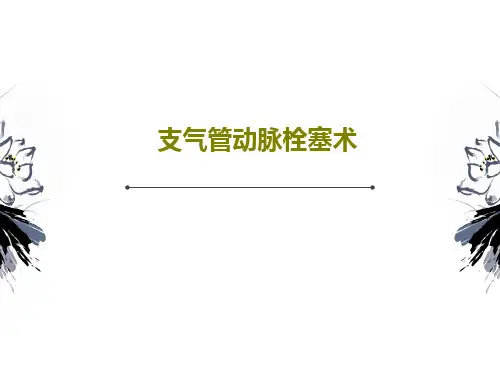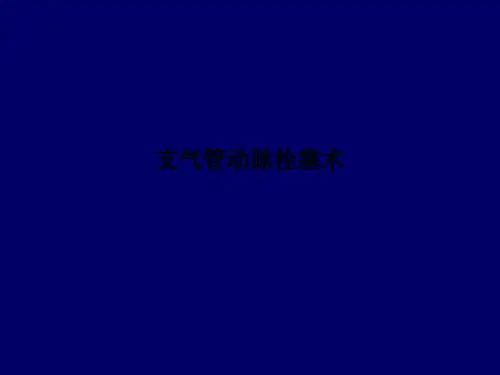支气管动脉栓塞术ppt课件
- 格式:ppt
- 大小:969.50 KB
- 文档页数:40
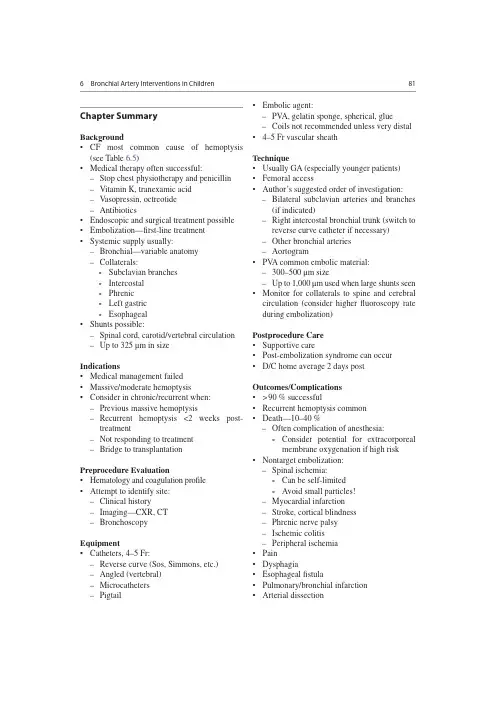
81C hapter SummaryB ackground• C F most common cause of hemoptysis (see Table 6.5)• M edical therapy often successful:–S top chest physiotherapy and penicillin–V itamin K, tranexamic acid–V asopressin, octreotide–A ntibiotics• E ndoscopic and surgical treatment possible • E mbolization—fi rst-line treatment• S ystemic supply usually:–B ronchial—variable anatomy–C ollaterals:∘Subclavian branches∘Intercostal∘Phrenic∘Left gastric∘Esophageal• S hunts possible:–S pinal cord, carotid/vertebral circulation–U p to 325 μm in sizeI ndications• M edical management failed• M assive/moderate hemoptysis• C onsider in chronic/recurrent when:–P revious massive hemoptysis–R ecurrent hemoptysis <2 weeks post-treatment–N ot responding to treatment–B ridge to transplantationP reprocedure Evaluation• H ematology and coagulation profi le• A ttempt to identify site:–C linical history–I maging—CXR, CT–B ronchoscopyE quipment• C atheters, 4–5 Fr:–R everse curve (Sos, Simmons, etc.)–A ngled (vertebral)–M icrocatheters–P igtail • E mbolic agent:–P V A, gelatin sponge, spherical, glue–C oils not recommended unless very distal • 4–5 Fr vascular sheathT echnique• U sually GA (especially younger patients) • F emoral access• A uthor’s suggested order of investigation:–B ilateral subclavian arteries and branches (if indicated)–R ight intercostal bronchial trunk (switch to reverse curve catheter if necessary) –O ther bronchial arteries–A ortogram• P V A common embolic material:–300–500 μm size–U p to 1,000 μm used when large shunts seen • M onitor for collaterals to spine and cerebral circulation (consider higher fl uoroscopy rate during embolization)P ostprocedure Care• S upportive care• P ost-embolization syndrome can occur• D/C home average 2 days postO utcomes/Complications• >90 % successful• R ecurrent hemoptysis common• D eath—10–40 %–O ften complication of anesthesia:∘Consider potential for extracorporeal membrane oxygenation if high risk• N ontarget embolization:–S pinal ischemia:∘Can be self-limited∘Avoid small particles!–M yocardial infarction–S troke, cortical blindness–P hrenic nerve palsy–I schemic colitis–P eripheral ischemia• P ain• D ysphagia• E sophageal fi stula• P ulmonary/bronchial infarction• A rterial dissection6 Bronchial Artery Interventions in Children。

